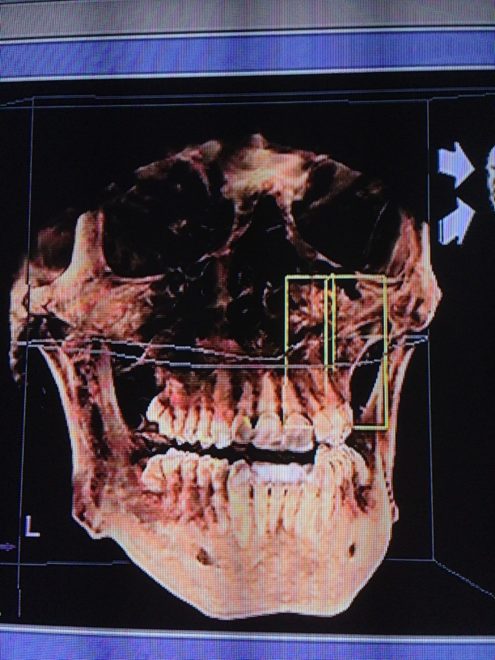#Bestconferenceevaahhhhh I shipped off to Boston to attend my first ever BSMPG summer symposium. And it was easily one of the best conferences I’ve ever been to. There was an excellent speaker lineup and so much of my family. Art Horne really put on a fantastic show. If you haven’t been to BSMPG before, put it on your to-course list. It is one of the few courses that has a perfect combination of learning and socializing. I hope to not miss another. Instead of my usual this person talked about that, let’s look at some of the big pearls from the weekend. Why Sapolsky Doesn’t Get Ulcers In one quote Robert Sapolsky summed up my current foundational premise to rehabilitation and training: “The stress response returns the body to homeostasis after actual or potential threats.” ~ Robert Sapolsky Regardless of what your malady is, it can probably be linked back to the stress response gone awry. The specifics become irrelevant because the stress response occurs nonspecifically. This response works best against acute crises. Guess how we screw it up? Chronic stressors. Human stressors are quite different from other species’ as we have the capability of inducing this stress response psychosocially. Gazelles on the Serengeti don’t have to worry about student loans. We can see how chronic stress becomes an issue when you look at what occurs in the stress response: Glucose travels to the bloodstream to mobilize energy. Increased cardiovascular tone, heart rate, and blood pressure. Decrease long-term building projects such as
Read MoreCourse Notes: PRI Interdisciplinary Integration 2015
A Stellar Symposium Back in April I had the pleasure of finally attending PRI’s annual symposium, and what an excellent learning experience. The theme this year was working with high-powered, extension-driven individuals. The amount of interdisciplinary overlap in each presentation made for a seamless symposium. Common themes included the brain, stress response, HRV, resilience, and drive. These are things altered in individuals who are highly successful, but may come at a cost to body systems. If you work with business owners, CEOs, high-level athletes and coaches, high level positions, straight-A students, special forces, and supermoms, this symposium was for you. And let’s face it; we are both in this category! There were so many pearls in each presentation that I wish I could write, but let’s view the course a-ha’s. The Wise Words of Ron Ron Hruska gave four excellent talks at this symposium regarding high performers and occlusion. Let’s dive into the master’s mind. People, PRI does not think extension is bad. Extension is a gift that drives us to excel. Individuals who have high self-efficacy must often “over-extend” themselves. This drive often requires system extension. Extension is a consequence, and probably a necessary adaptation, of success. If this drive must be reduced to increase function and/or alter symptoms in these individuals, we have to turn down the volume knob. How can we power down these individuals? Limit alternate choices – These folks take a wide view of a task Set boundaries – These folks attribute failure to external factors Making initial
Read MoreSmooth Talker: Nonthreatening PRI Patient Education
I recently had the pleasure and honor of speaking at the annual PRC conference at this past weekend’s Interdisciplinary Integration. I happened to have my younger older brother Connor Ryan record the event. We unfortunately had some technical difficulties, so a few bits are missing. But you’ll get the gist from the videos below. Enjoy! Smooth Talker handout
Read MoreThe Road to an Alternating and Reciprocal Warrior: You down with ENT?
This spans an entire treatment over a year’s time. Here’s part 1 Part 2 Part 3 Part 4 “Yeah you know me.” ~ Naughty By Nature You know how sometimes when you are treating someone that individual eventually reveals fairly important information that he or she forgot about. Yeah that was totally me. I’ve always had a stuffy nose as far back as I can remember; especially in the winter. The only time breathing felt incredibly easy was when I was eating paleo in college. I have progressively been losing my sense of smell as well. Must be old age right? When I spoke with Lori Thomsen about my recent experience, she mentioned at Pelvis that attaining neutrality in certain areas but not others could lead to a “pressure cooker” phenomenon. For example, if I have someone with a neutral neck and thorax, lower extremity symptoms may possibly be more common. In my case, I had a neutral pelvis at the time my wisdom teeth were pulled. Pull out wisdom teeth and my nasal airway goes crazy. Guess where the pressure went? It was time to see an ENT. ENT Begins After viewing my CT scan and airway, my ENT concluded I have patho-scoliosis. More specifically, airway scoliosis. He found a deviated septum and some enlarged turbinates. These two factors could have a large impact on my breathing capabilities. To me this made a lot of sense. If you read this article, a nostril will drive air to the ipsilateral lung.
Read More
Course Notes: Pelvis Restoration Reflections
Pelvises Were Restored It was another great PRI weekend and I was fortunate enough to host the hilarious Lori Thomsen to teach her baby, Pelvis Restoration. Lori is a very good friend of mine, and we happened to have two of our mentees at the course as well. Needless to say it was a fun family get-together. Lori was absolutely on fire this weekend clearing up concepts for me and she aptly applied the PRI principles on multiple levels. She has a very systematic approach to the course, and is a great person to learn from, especially if you are a PRI noob. Here were some of the big concepts I shall reflect on. If you want the entire course lowdown, read the first time I took the course here. Extension = Closing Multiple Systems This right here is for you nerve heads. It turns out the pelvis is an incredibly neurologically rich area. What happens if a drive my pelvis into a position of extension for a prolonged period of time? I’ve written a lot about how Shacklock teaches closing and opening dysfunctions with the nervous system. An extended position here over time would increase tension brought along the pelvic nerves. Increased tension = decreased bloodflow = sensitivity. We can’t just limit it to nerves however, the same would occur in the vasculature and lymphatic system. We get stagnation of many vessels. Perhaps we need to think of extension as system closure; a system closing problem. Flexion will be
Read More
Recognizing and Changing Nonverbal Communication Disorders: An Interaction Approach
I was at my local coffee shop the other day chatting with my barista as she prepared my drink. Once it was all said and done and I paid, she wished that I had a glorious day. Glorious is not a word you hear often and definitely caught me ear. You might even say it was salient! I have this thing when someone uses an uncommon descriptor. When this occurs, I typically try to use an even more ridiculous descriptor. I especially like to apply this method to wish someone a better day than I. For example: Joe Blow: “You have a good day.” Me: “You have an even better day.” Glorious is a bit more difficult to top, but in the blink of an eye I was able to respond: “You have a splendiferous day.” Stupid? Yes. Did I get a laugh and a smile? Absolutely. Me doing this silly little thing with people is irrelevant. What is relevant is the speed that I was able to apply this quip. I spouted this word quickly because it fit a common pattern. Pattern recognition is huge in athleticism, medicine, and a multitude of other life facets. But how often do we think of pattern recognition when we interact with individuals? Being able to differentiate what both verbal and nonverbal communication one uses is critical in ensuring a favorable interaction with someone. And if your patient or client doesn’t like you? Fugetaboutit. Let’s look at a very common pattern that if you allow
Read More
It’s the Salient Detection System, Stupid
Can you tell the difference among pain, depression, and pleasure? From a neurotransmitter perspective, the answer is no (see here and here). How is it that three very different states can be so neurologically similar? I feel the commonality that the nervous system purports reflects a system that responds to stimuli that are deviations from the norm. We call these instances by this word: Salient. Doesn’t that make your loins quiver? Let’s discuss how it works. Here’s your recommended reading. 1. The pain matrix reloaded: a salience detection system for the body (Thanks Sigurd) 2. Stress signalling pathways that impair prefrontal cortex structure and function (Thanks Son) 3. From the neuromatrix to the pain matrix (and back) [Note: Most of this article is an amalgamation of the three articles that I cited above and my own thoughts. Rather then cite every sentence AMA-style, I’ll give the credit to these guys above. Read ‘em and figure out how I put this together. For those who are sticklers for proper reference formatting, the type I am using is KMA-style citation.*] The Pain Neuromatrix Myth Hate to break it to you, but pain ain’t so special. Here’s why. If you follow modern pain science, you may often hear the term pain neurosignature or neurotag. This phrase is meant to describe a cluster of brain areas that are active during a pain experience. Information that can contribute to a pain experience travels to several areas. Some of the big players are the primary and secondary somatosensory cortices (all the
Read More
The Road to an Alternating and Reciprocal Warrior: Wisdom Teeth Extraction
This spans an entire treatment over a year’s time. Here’s part 1 Part 2 Part 3 The Saga Continues I’ve been through vision, I’ve had dental integration, I’ve put in the PRI activity homework, maximized my PRI testing, and feel a new man. Yet neutrality eludes me. It is a state of mind I could once feel by the power of glasses and splints, but the nervous system learns and accommodates. I topped out. But of course, I knew that would be the case from my very first session with Ron. “You gotta get those wisdom teeth pulled.” ~Ron Hruska By virtue of the dentist I integrate with, the time came. And here are the results. Zac B.E. (Before Extraction) So at this point in my life the large HRV gains I initially had were dropping and I was still having some neck tension. Training was feeling so-so. Test-wise, the videos below show what I look like. Here’s my squat And my toe touch. Upper quadrant tests And lower quadrant tests Mandibular movements And some cervical movements My pelvis is consistently neutral and I can shift and squat with the best of ‘em. But I still present with restrictions in my thorax, neck, and mandible (BBC/RTMCC). These limitations are likely present because of a bony block called wisdom teeth. As you can see, the maxillary (top side) wisdom teeth limit the excurision of my lateral pterygoids for lateral trusive movements. My hope is by removing these guys I will get
Read More9 weeks with Bane, I mean Zac…Oops Sorry Wrong CI
Note from Zac: This is my first guest post, and to start things up is the one and only Trevor Rappa. Trevor was my intern for the past 9 weeks and he absolutely killed it. Here is his story. It’s very exciting for me to get to write a guest post for Zac’s blog that I have read so many times and learned so much from. The experience I have had with him over these past 9 weeks has been incredible and I hope to share some of it with all of you that read this. He challenged me to think critically in every aspect of patient interaction: how I first greet them, which side of them I sit on, the words I use, and how I explain to the patient why I chose the exercises they’ll go home with. All of this was to create a non-threatening environment to help to patient achieve the best results they can. He also taught me how to educate patients with a TNE approach, incorporate other interventions such as mirror therapy into a PRI based treatment model, and deepened my understanding of the neurologic concepts behind performance. Therapeutic Neuroscience Education Perception of threat can lead to a painful experience which will cause a change in behavior. It’s the PT’s role to introduce a salient stimulus to attenuate the perception of threat in order to cause a positive change in experience and behavior (Zac and I came up with that, I really like it). Pain
Read MoreFavorable Inputs: A Model for Achieving Outcomes
One Hot Model Louis Gifford’s Topical Issues in Pain has an amazing amount of quality information, and has really inspired many thoughts. I’ve only read book 1 thus far, but this book can generate material to expand upon much like Supertraining does for fitness writers. I’m sure many of you folks have seen this picture before. Gifford called this schematic the “Mature Organism Model” (MOM) to illustrate how pain works. Inputs from the tissues and the environment travel up the spinal cord to the brain. The brain processes these inputs and samples information from itself to generate a corresponding output. These outputs are perceived as new inputs which reset the cycle. MOM was of course used to illustrate the three pain types (read here and here), but it is so much more than that. The MOM is a schematic for how the nervous system works. Any input that is processed by the brain may or may not lead to outputs of altered physiology and/or behavior. Viewing (your) MOM (ha) made me think a lot about working with individuals who are dealing with a threat response. How exactly are we helping these folks? I’ve come to believe that we do not treat outputs. At best we can only provide inputs that we hope are exchanged for new, desirable outputs. In patient care, we are hoping to alter perceived threat. We attenuate threat by giving an individual favorable inputs, which we hope leads to favorable behavior and physiological changes. Let’s look at what these
Read MoreCome Hang With Me: Courses At My Clinic
Dear Readership We are hosting several courses at my clinic this year, and we would love to have you, the readers, attend. The three courses that East Valley Spine and Sports will be hosting are all excellent courses. I have taken two of these classes prior, and the third I have taken a prior rendition of. And let me tell you, these courses are boss. Aside from us bringing some excellent content, you will also have the opportunity to hang out with a good group of people, and imbibe in some good beverages with me. Here is what we are bringing. PRI Pelvis Restoration: March 28th-29th I took this course a little over a year ago (read the review here) and I am very excited to be learning from Lori again. She presents this very complex material in a systematic and understandable fashion. Most importantly, she’s funny! Signup for the course here. ISPI Therapeutic Neuroscience Education: Educating Patients about Pain: June 6th-7th Adriaan Louw is one of the best speakers I have heard, and the material is priceless (read my review here). This course gives several practical insights as well as easy-to-learn neuroscience education that will help you become adept and educating patients on pain. Signup for the course here. ISPI Neurodynamics: The Bodies Living Alarm: October 17th-18th I took a version of this class when Adriaan spoke for the NOI group, and I am excited to see what tweaks have been made since. This time we are bring Louie
Read MoreCourse Notes: PRI Cervical Revolution
Where are all the People? I recently made the trek to Vermont for the first rendition of PRI’s Cervical Revolution course; a course in which the attendees doubled the population of the entire state. It was nice to go to the class with a bunch of old friends. You always learn better that way, and I couldn’t have been more excited to get the band back together. And even more so, I got to meet a lot of good folks for the first time. It was a real treat. This course was meant to update the former craniocervical mandibular restoration course (which I reviewed here and here), with extra emphasis on the cervical spine and OA joint. In this blog however, I will not touch much on the cervical spine positioning. I still have several questions regarding the mechanics. Some spots within the manual seemed to be conflicting; the blessing and curse of a first run-through. I will update this piece once I get these points figured out. That said, the revolution helped fine tune the dental integration process for me. I have been working a bit with a dentist, and I have a bit more insight in terms of what devices they are using for whom. Let’s go through my big a-ha moments. Smudging 901 The human body is symmetrically asymmetrical. When we have capacity to alternate and reciprocate, we are able to separate the body into parts to form a whole. If you lack integration, then there are
Read More